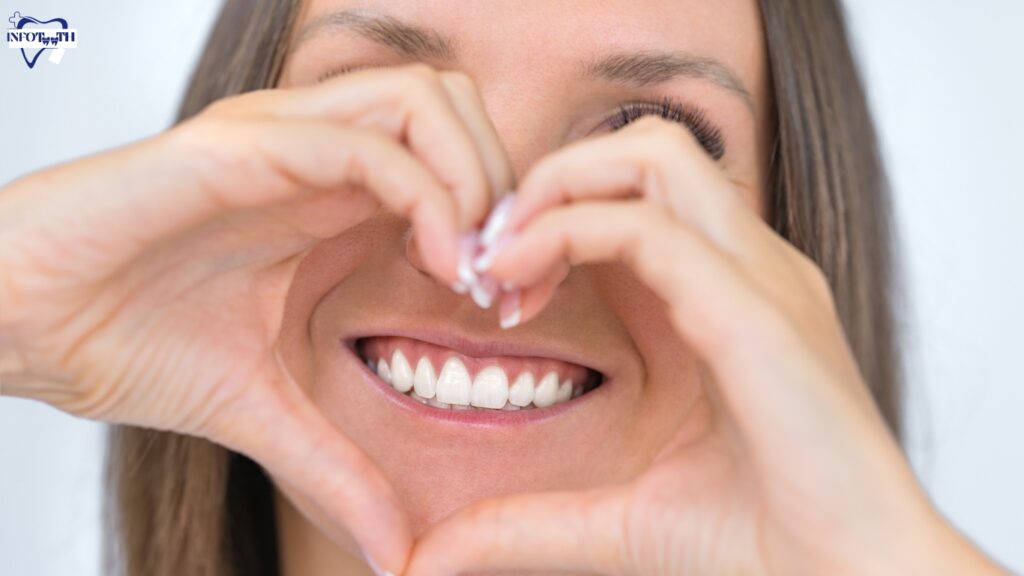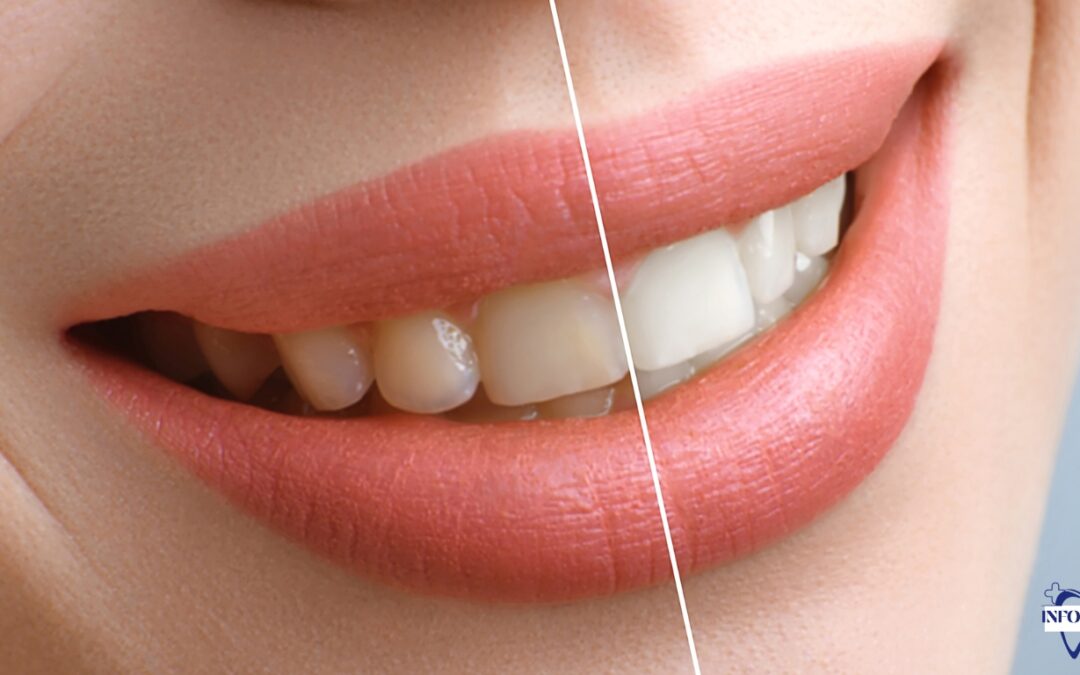Although many people choose teeth whitening to improve their looks, the process isn’t always perfect. The appearance of white spots on teeth after whitening is an unforeseen problem that some people experience after teeth whitening. These white spots on teeth after whitening, which are frequently confusing, can have a number of causes. We’ll explore the origins, prevention, and workable solutions for white spots after teeth whitening in this blog post.
Table of Contents
Come along on a trip to comprehend and resolve this prevalent worry for a more radiant, stain-free smile.
What Are The Reasons Behind Post-Whitening White Spots on Teeth?
Teeth whitening operations are frequently used by people who want a brilliant smile, but the results aren’t always as perfect as people want. White spots on teeth after whitening, and knowing what causes them is essential to treating this frequent problem. Among the main reasons for white spots after bleaching, enamel hypoplasia is noteworthy.
This disease causes inconsistent whitening results with noticeable patches left behind due to insufficient enamel development. People who already have enamel hypoplasia may be more vulnerable to this issue. Another reason is overindulging in fluoride during teeth-whitening operations. Fluoride is good for teeth, but too much of it can cause fluorosis, which looks ugly with white patches.

To stop this from happening, people must be aware of the fluoride concentration in the products they use both before and after teeth whitening. White spots can result from bad dental hygiene both during and after teeth whitening. When necessary minerals are removed from the enamel through demineralization—a process that causes the enamel to become discolored—blemishes like these appear.
White spots on teeth after whitening are a result of demineralization on their own. After teeth whitening, if a healthy oral environment is not maintained, minerals may be lost, resulting in an imbalance that shows up as these unsightly patches. In order to prevent and manage white spots on teeth after teeth whitening, people can take preventive actions and make informed decisions if they have a thorough awareness of these reasons.
What Is The Effect Of White Spots On Teeth Child?
Parents may worry about the safety and suitability of teeth-whitening treatments for young people when they notice white spots on their child’s teeth following whitening. Although adult teeth whitening is usually thought to be safe, children’s teeth are still developing. Therefore, care must be taken.
There are a number of reasons why a child’s teeth could develop white spots on teeth after whitening. Enamel hypoplasia, a disorder where the enamel doesn’t develop properly and leaves the teeth prone to discoloration, is one prevalent cause. Since children’s teeth are more sensitive and porous than those of adults, excessive use of whitening solutions or those with high concentrations of bleaching agents can also result in white spots.
Before thinking about having their children undergo any teeth-whitening procedures, parents should definitely speak with pediatric dentists. Dentists can evaluate the child’s oral health, offer recommendations for age-appropriate teeth-whitening products, and suggest preventive care. These include eating a balanced diet, practicing good oral hygiene, and avoiding acidic or sugary foods that can erode enamel.
In conclusion, white spots on teeth after whitening could be a sign of underlying problems and emphasize how crucial it is for young people to receive competent dental care. For children having teeth-whitening operations, it is imperative to ensure their oral health and well-being through age-appropriate interventions, expert advice, and parental knowledge.
What Are Horizontal White Lines On Teeth?
An undesirable side effect of teeth whitening treatments might be horizontal white lines on teeth, which can undermine the goal of a brighter, more radiant smile. The unequal distribution of the whitening agent throughout the treatment process is the cause of these lines, which are also known as enamel hypoplasia. Although the goal of teeth whitening is to remove stains and discoloration, people may become dissatisfied with their teeth’s appearance if they unintentionally produce these horizontal lines.

The unequal penetration of the whitening gel into the enamel causes areas of overexposure or inadequate coverage, which is what causes the problem. When the whitening chemical is applied inconsistently, the enamel may deteriorate and show as horizontal white lines on the teeth. The lines might become more obvious and prominent, which would take away from the smile’s overall aesthetic attractiveness.
It is essential to adhere to recommended teeth-whitening procedures in order to reduce the chance of getting these white lines. Enamel hypoplasia can be reduced by seeing a dentist for professional advice, utilizing safe whitening solutions, and closely following application schedules. Furthermore, choosing alternative whitening techniques like in-office expert treatments might provide in more exact and regulated results.
What Are The Effects Of White Spots On Teeth After Whitening?
Bleaching agents, such as hydrogen peroxide, are commonly used in the whitening procedure because they may penetrate enamel and remove stains. However, these noticeable white spots on teeth after whitening might be caused by enamel demineralization, which can result from overuse or poor application of whitening procedures. This problem may be caused by variables such as excessive use of whitening products, prolonged treatment periods, or the use of products with high bleaching chemical concentrations.

These white spots on teeth after whitening suggest possible enamel degradation in addition to being an aesthetic issue. Teeth that have experienced enamel demineralization are weakened and are more prone to decay and sensitivity. Those getting teeth whitening procedures must adhere to suggested protocols, which include seeing a dentist, using products sparingly, and making sure they maintain good dental hygiene habits.
Some people choose to get professional in-office whitening procedures, which are strictly supervised by dental professionals, to reduce the possibility of white spots. White spots on teeth after whitening can also be addressed and prevented with the use of remineralizing toothpaste and routine dental checkups, which will ultimately result in a brighter, healthier smile.
How To Get Rid Of White Spots On Teeth After Whitening?
White spots on teeth after whitening can be a typical worry for people who want a more radiant smile. These white spots on teeth after whitening, often referred to as demineralization, can be caused by a number of things, including overuse of teeth-whitening treatments, bad dental hygiene, or even underlying medical disorders. In order to treat and avoid white spots, preventive dental care is essential. First and foremost, make sure you follow a strict and regular oral hygiene regimen by using fluoride toothpaste twice a day to clean your teeth. Fluoride keeps white spots from forming and aids in the remineralization of enamel.
Think about using toothpaste made especially to improve enamel and address sensitivity. Additional minerals and substances that encourage remineralization are frequently included in these toothpaste formulations. Make sure to floss frequently to get rid of food particles and plaque in between your teeth, in addition to brushing correctly. By doing this, you can lessen the chance of germs growing and demineralizing enamel.
If you recently had teeth-whitening done, you should adhere to any after-treatment instructions that your dentist gives you. This can entail taking the recommended remineralizing agents as well as abstaining from particular foods and drinks for a predetermined amount of time. Maintaining a healthy, well-balanced diet is another important factor in maintaining good dental health. Eat meals high in vitamin D, calcium, and phosphorus since these nutrients help to maintain strong and healthy enamel.
How To Remove White Spots On Teeth Naturally?
Following teeth whitening, you can attempt these natural methods to help reduce or get rid of white spots on teeth after whitening. A number of things, such as excessive fluoride during tooth formation, mineral loss, or enamel hypoplasia, can cause white spots. The following are some all-natural ways to treat white spots:
Oil Pulling:
After teeth whitening, oil pulling is a natural treatment for white spots on teeth. This age-old method entails swishing some coconut or sesame oil in the mouth to help get rid of bacteria and toxins, improve oral health, and lessen the look of white spots.
Turmeric Paste:
Due to its inherent antibacterial and anti-inflammatory qualities, turmeric paste is becoming more and more well-liked as a treatment for post-whitening white spots on teeth. Its application is to provide a comprehensive strategy to address post-whitening issues by promoting oral health and reducing inflammation.
Vitamin D and calcium:
They are essential for preventing white spots on teeth after teeth whitening. By promoting enamel remineralization, these nutrients stop tooth whitening-related demineralization. Including them in your diet improves dental health and brings back your smile’s original brightness.
Green Tea:
Packed with anti-inflammatory and antioxidant qualities, green tea can help reduce white spots on teeth after teeth whitening. Frequent ingestion may counteract the effects of teeth-whitening procedures by increasing general oral health and lowering sensitivity.

Steer Clear of Acidic Meals:
Steer clear of acidic meals to avoid white spots after teeth whitening. White spots can worsen when acidic chemicals erode dental enamel. After getting teeth whitening, choose a balanced diet and practice proper oral hygiene for a whiter, healthier smile.
Sustain Good Oral Hygiene:
White spots on teeth after whitening can be prevented and treated with proper oral hygiene. Plaque and stains can be removed from teeth with regular brushing, flossing, and expert cleanings, giving you a whiter, healthier smile.
Conclusion
In conclusion, a variety of factors, including enamel demineralization or pre-existing diseases, may contribute to the development of white spots on teeth after whitening procedures. Although teeth whitening can improve the appearance of a smile, in order to reduce any potential negative effects, it is essential to adhere to professional instructions and practice good oral hygiene. A dentist’s advice may help people make educated decisions and address any issues, ensuring a brighter smile without sacrificing dental health, both before and after whitening operations.
FAQs
Q: After teeth whitening, why do I still have white spots on my teeth?
A: A number of factors, including an uneven application of the whitening solution, pre-existing enamel hypoplasia, or drying of the enamel during the whitening procedure, might result in white patches on teeth after whitening. Recognizing the origin can aid in treating and averting the emergence of these lesions.
Q: After teeth whitening, are white spots permanent?
A: White spots that result from teeth whitening are typically temporary. They frequently go away on their own as the enamel rehydrates and may just be transient. You can make sure the spots go away over time by talking with your dentist and practicing good oral hygiene.
Q: Is it possible to avoid white spots with teeth-whitening?
A: Indeed, there are actions you may take to reduce the possibility of getting white spots on your teeth after teeth whitening. A more even and effective whitening procedure can be ensured by adhering to the directions included with the whitening product, avoiding overuse, and scheduling an appointment with your dentist beforehand.
Q: After receiving teeth whitening treatment, what should I do if I see white spots on my teeth?
A: See your dentist right away if you observe white patches on your teeth following teeth whitening. They are able to evaluate the circumstances, identify the reason behind the spots, and suggest a suitable course of action. It could be changing your dental hygiene regimen, getting more treatments, or just waiting for the spots to go away on their own.
Q: Do any other teeth-whitening techniques that prevent white spots?
A: Indeed, other teeth-whitening techniques can lessen the chance of getting white spots. To find the best whitening solution for your unique circumstances, speak with your dentist. White spots may be less likely with expert, in-office whitening procedures or with specially made-at-home whitening trays that provide more regulated and even results
.

